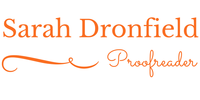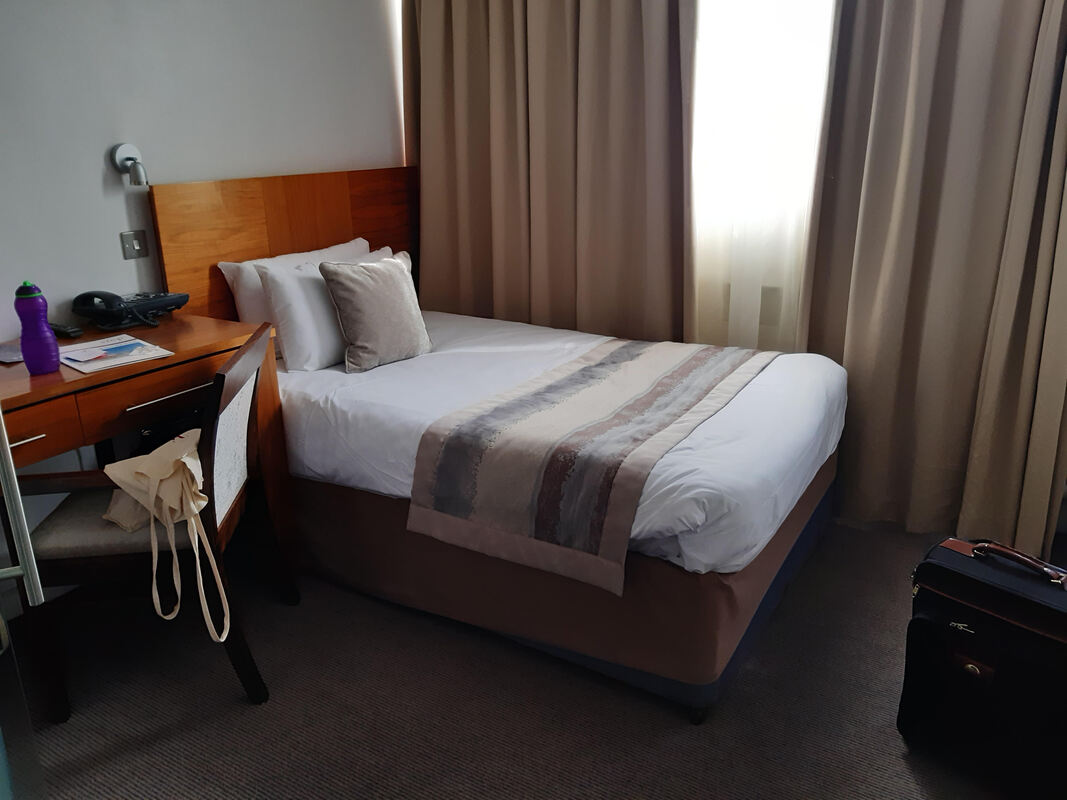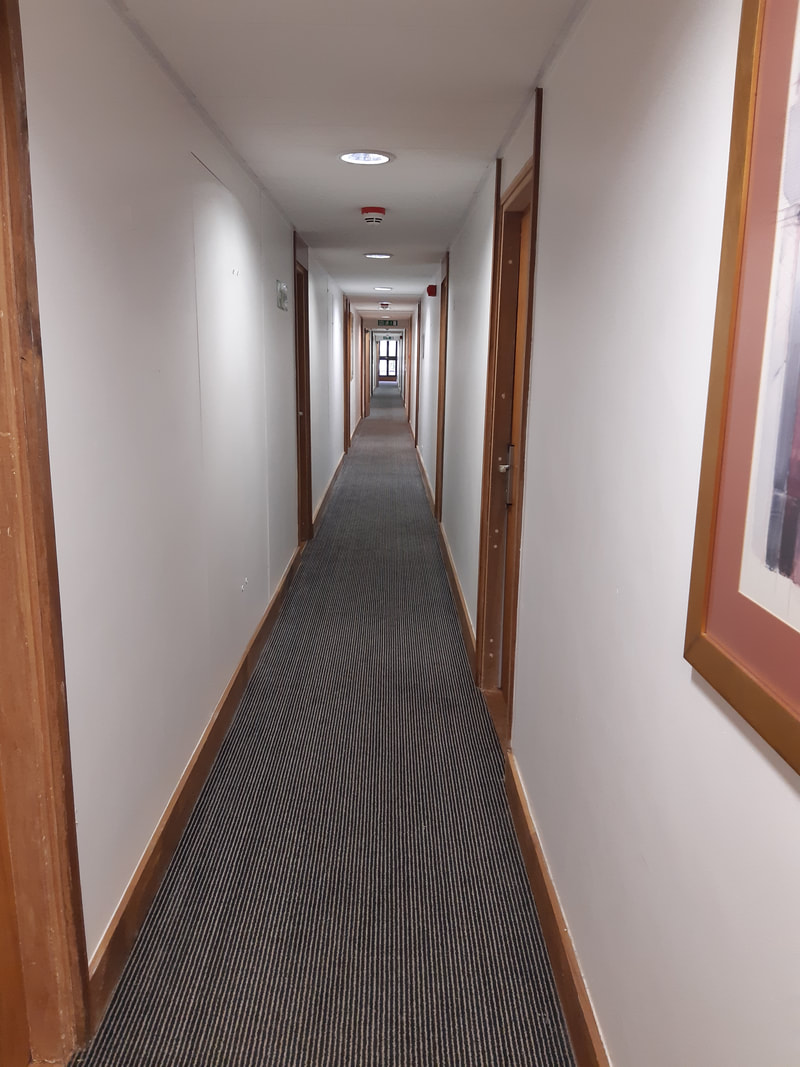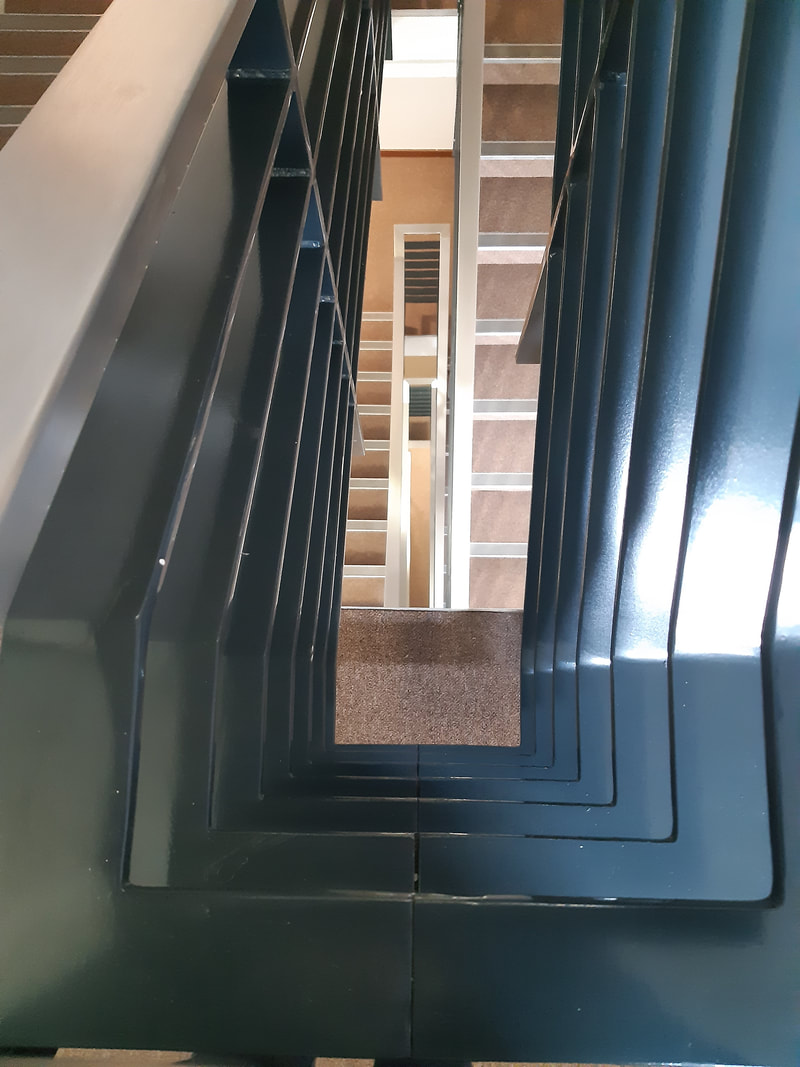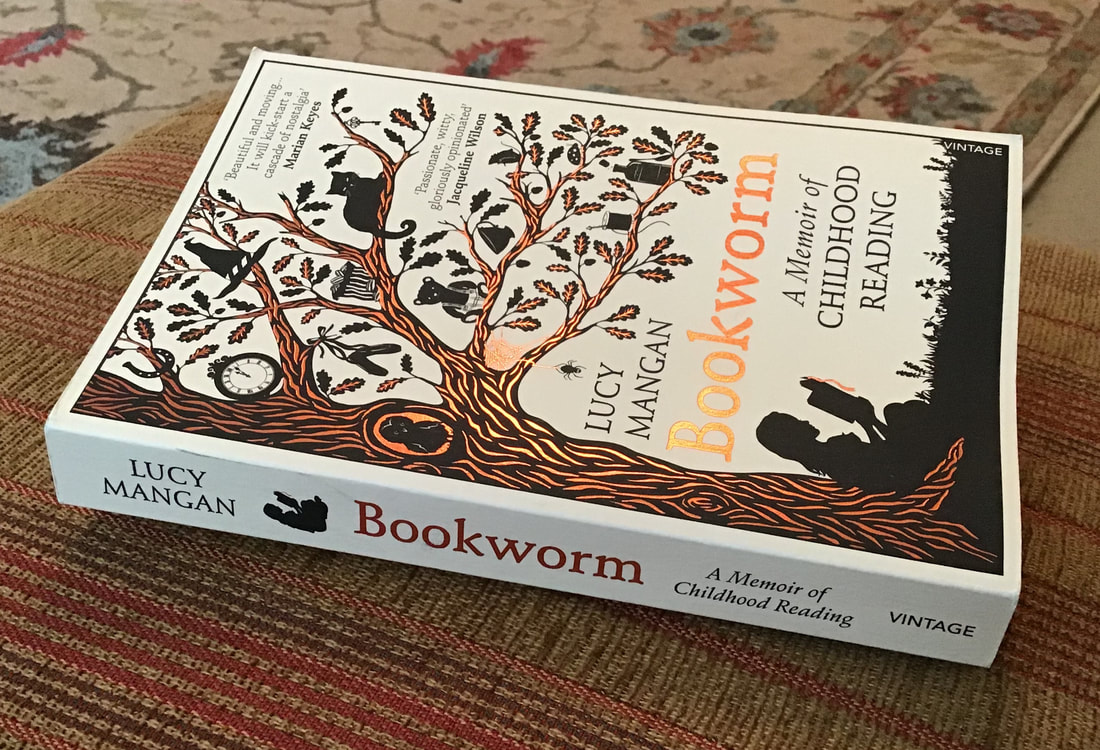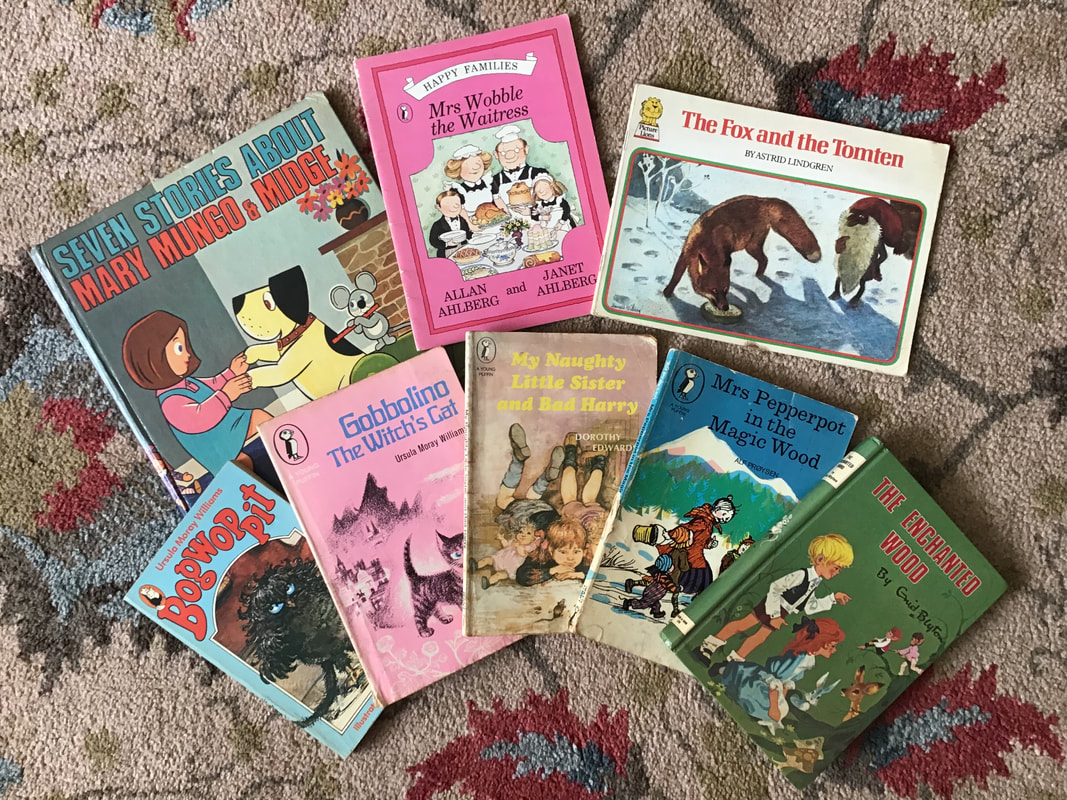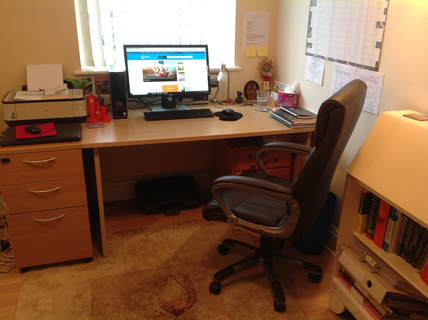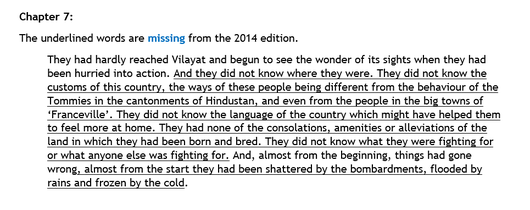|
Complex dialogue
Part 1 covered the basic rules of dialogue punctuation. This second post discusses the options when it comes to punctuating different types of dialogue, and most of these involve making style choices. The quote mark The first thing to consider is the quote mark: should you use single or double? Single is more popular in the UK and double is more popular in the US, but ultimately it’s a style choice, so choose one and stick to it. But try to remember that if you are using single quote marks and you have a quote within dialogue, then the quote needs to be in double quote marks, and vice versa. So you will either be using single quote marks and double within or double quote marks and single within. Single quote marks and double within:
Some authors use one kind of quote mark for dialogue and the other for a quote when the quote isn’t nested in dialogue, but that isn’t necessary – you can use the same for both as follows:
Pausing/trailing off When there’s a pause in speech or it trails off, use an ellipsis.
Stuttering If a character stutters, the usual way to represent this is to use hyphens. The repeated letter should be lowercase:
Cut-off speech When a character is interrupted mid-speech, an em dash is usually used (in the UK as well as the US) to represent this:
Speech interrupted by an action beat There are various ways of styling this, but the examples below are the simplest and most commonly used, with either an unspaced em dash or a spaced en dash. (Em dashes are used in the US; either can be used in the UK, although en dashes are more popular.)
Translated dialogue If you need to have dialogue in which a character speaks a language other than English, but the meaning isn’t clear and you want the reader to understand, you will need to provide a translation. (If you don’t speak the relevant language yourself, please find someone who does to check the translation.) There are lots of different ways you could style this; below are just a few examples of the possible options. As with all style choices, choose one and use it consistently.
How to find the ellipsis, em dash and en dash In this post I’ve mentioned several punctuation marks that don’t appear on a standard keyboard. Although you can of course create an ellipsis by typing three full stops, there is an ellipsis symbol. On an iPad, for example, this can be found by pressing and holding the full stop key. On a Mac you press Option + ; (Semi-colon), and on a PC it will appear if you press Alt + 0133. An em dash can be found on an iPad by pressing and holding the hyphen key—it is the longest dash—or by pressing Control + Alt + Minus (or Alt + 0151) on a PC. On a Mac you press Shift + Option + Minus. An en dash can be found on an iPad by pressing and holding the hyphen key – an en dash is longer than a hyphen but shorter than an em dash – or by pressing Control + Minus (or Alt + 0150) on a PC. On a Mac you press Option + Minus. Summary Dialogue punctuation is pretty complicated, so it’s no wonder that many authors struggle with it. If after reading this you still can’t get your head round it, or you can’t be bothered with all this fine detail because you just want to focus on your writing, don’t worry: your copy-editor will sort it all out for you. But if you can self-edit as much as possible, it might help reduce the cost of a copy-edit if you are on a tight budget. Basic guide if it’s all too much:
0 Comments
This is the first of two posts in which I will discuss dialogue punctuation. This first part will deal with the basic rules of punctuating dialogue. The second part will deal with more complex dialogue punctuation, when there aren’t any hard and fast rules but rather a number of style choices.
The Basic Rules The rules outlined in this post are non-negotiable. Well, I say that, but you may have read some novels that use no speech marks for dialogue and therefore break all of the following rules. Some readers like that, others get used to it, and some dislike it and refuse to read such books. So be aware that it might put some readers off if you decide to go down that road. Also bear in mind that you need to know the rules inside out before you can confidently and effectively break them. Please excuse the incredibly boring examples of dialogue that follow; I’m keeping it simple to focus on the punctuation. Dialogue tags/speech tags
If you want your speech tag to be in the middle of a sentence of dialogue, then a comma is needed before the closing quote mark in the first bit of dialogue and another after the speech tag:
Action beats When dialogue is followed by an action (or nothing at all), a full stop is used (unless a question mark or exclamation mark is required).
Things to note when using speech tags and action beats: • A dialogue tag that follows speech begins with a lowercase letter because it’s all part of the same sentence, which just happens to include some dialogue. This is the case even when the speech ends with a question mark or exclamation mark.
The vocative comma When speaking, a character often addresses another character by their name. When they do, a vocative comma is required. It goes after the name if the name opens the dialogue:
The vocative comma is used however the person is being addressed: by their name, nickname, job title, an honorific or some other form of address:
Lengthy dialogue If a character speaks at length and continues into a second or third paragraph, the only paragraph that has a closing quote mark is the final one. But each new paragraph within the speech starts with an opening quote mark to show that the speech is continuing. The example below isn't exactly lengthy dialogue, but you get the picture ... 'I don't know what to write. What should I write? 'I know: I can write about what happened last week; that was amazing! 'But where do I start ...' That sums up the basic rules of punctuating dialogue. Part 2 will discuss things such as double and single quote marks, interrupted speech, pauses and stuttering, for which there are no rules but style choices need to be made, and some of these may be determined depending on whether you are using British or American English. I am a member of a Facebook group for editors (Brendan O'Brien talks about the group here), in which I share a weekly round-up of blog posts primarily aimed at improving editorial (or editorial business) skills and knowledge. Here is a round-up of some of my favourite posts from 2019. Business planning and managementRuth E. Thaler-Carter on managing challenging clients and projects. Melanie Thompson on how to stay calm in a crisis. Louise Harnby posts something useful on her blog every week. Here are just two examples: Five ways to improve the way you run your editing and proofreading business The author–editor relationship Helen Stevens on diplomacy. Cathy Tingle asks what does customer service mean for editing professionals? Amy Baker on working with debut authors. Kate Haigh on business continuity. MarketingSophie Playle on building a website. Ruth E. Thaler-Carter on making time for marketing and the ongoing challenge of finding editorial work. Jennifer Lawler on using partnerships to expand your reach. Louise Harnby has lots of useful advice about marketing on her website. Here is just one post, about branding. EditingRachel Rowlands on what you need to know about sensitivity reading. Paul Chevannes on editing for equality. Are standards slipping? Kiera Jamison asks Is there a business case for editing well? Kate Haigh on editing autobiographies and memoirs. James Harbeck says editors need to think more like Machiavelli. Erin Carrie asks who decides what is perfect when it comes to language use? in Linguistic prejudice. Gerri Berendzen talks about spotting the red flags to fact-check. Adrienne Montgomerie's ten signs of 'lifted' text. Russell Harper on comma splices and run-on sentences. Jennifer Lawler on growing your developmental editing mindset. Editing toolsMore from Louise Harnby's website: The best reference resources for editors and proofreaders Macros for writers and editors Computer-aided editing Health and well-beingKatharine O'Moore-Klopf on self-care while managing life changes. Ruth E. Thaler-Carter talks about finding joy in what we do. Grammar Girl explains the #StetWalk hashtag, started by Tanya Gold. And Cathy Tingle and other editors explain the #RunOnEditors hashtag. Advice for authorsLesley Jones on point of view.
Carol Saller talks about using trademarked and registered names in your novel. In this podcast, Denise Cowle and Louise Harnby talk about how to prepare your book file for editing. Jennifer Lawler on query letter basics. I hope you've enjoyed this round-up. I'm looking forward to reading lots of new posts in 2020! I’d been looking forward to my second Society for Editors and Proofreaders (SfEP) conference for months. The annual conference is a fantastic opportunity for editors and proofreaders to get together to learn and to socialise. I first went in 2017, when I was ill. Fortunately, this time I was well and raring to go. The journey The beginning of my journey on Saturday was a little stressful, what with my husband trying to take me to the wrong train station; then, once he’d dropped me at the front of the correct station, I was told that I needed to walk round to the back, via the main road because the station was closed for electrification work, where I needed to catch a replacement bus to the next station to meet my train. The replacement bus was late and I only just managed to catch the train. Thankfully the rest of the journey to Birmingham went without a hitch and I even managed to find another editor to share a taxi with – thanks, Louise Bolotin – from New Street station to the conference venue at Aston University. Soon I was in my room, which was a lot smaller than some of the other rooms but still rather luxurious; I was particularly pleased to find a sachet of Galaxy hot chocolate waiting for me. Fantastic news! I had some time to rest before the AGM, where we received some excellent news: the SfEP has been granted chartership, which means that in a few months we will become the Chartered Institute of Editing and Proofreading. This doesn’t mean that we, as individuals, will become chartered editors or proofreaders (although that might be a possibility for some of us one day) but hopefully it will show the world what a valued profession this is and how much our skills and knowledge are needed. Drinks, chilli and Kevin A little later it was time for pre-dinner drinks, and I found myself chatting to Emma Darwin (author and great-great granddaughter of Charles) at the bar; she is really lovely. I also chatted with edibuddies, including Kia Thomas who I talk to a lot online, so it was great to finally see her again in person. I sat next to her at dinner too, and once the chilli-loaded meal was over (there was chilli in every main-course dish and even in the cheesecake) it was time for the quiz. Our table, team name: Kevin, won the quiz; our prize: three tubs of Cadbury’s Heroes. The long corridors and multiple flights of stairs were a welcome sight after hours of sitting and standing. Style sheets After a chilli-free cooked breakfast on Sunday morning I decided to skip the opening lecture so I could get some more rest before a busy day. It sounds like I missed a hilarious and very sweary talk by author Chris Brookmyre, but I am glad I had that rest because it was non-stop after that. First I attended a two-hour workshop on creating effective style sheets, with Ian Howe. Style sheets are essential for consistency and efficiency. We had a discussion and we all agreed on the kind of things that a style sheet should include. Some things are always on there, such as spelling and punctuation, but if you’re working on fiction you also need to include a list of characters and locations; if you’re working on an academic text you need to note how references and citations should be presented. We could have talked for longer about what can be included as the list seems to be endless (how to deal with numbers, quotations, headings, lists, abbreviations and acronyms, terminology, etc.) but Ian went on to show us some very interesting examples of the different ways editors use style sheets. One great idea that I should use came from Graham Hughes’ style sheet. Graham colour-codes items – in grey, purple or black – to denote whether the usage is not yet determined, specified in the style guide/brief, or a decision made by himself (usually based on usage in the manuscript). Something I already do, which Ian recommended, is to use PerfectIt or macros to check for consistency (or lack of) before starting work on a manuscript. More chilli, and copyright After lunch (chilli con carne) it was time for a seminar on avoiding copyright pitfalls. As Stephen Baker, the session leader, pointed out, it can be a really dull subject ‘until it hits the fan’. I’m reluctant to share the content of the seminar here because it’s so complicated and because laws vary between countries/jurisdictions and I wouldn’t want anyone to make any decisions or give advice based on what I’ve said. Suffice it to say that it behoves all editors to ensure that they are at least familiar with the basics. Here endeth the sermon. Lightning talks Next came the lightning talks, a light-hearted session in which several people get five minutes each to speak, usually about a subject close to their heart. The talk closest to my heart was the one by Sue Walton. Sue talked about the history of the Welsh language: In the beginning was the word … and in Britain that word was Welsh. I come from a non-Welsh-speaking part of Wales and so they didn’t bother to teach us Welsh when I was in school. I’m so glad that has changed now and that my son is learning the language. I love that when he points out Castell Coch from the motorway he actually sounds Welsh, unlike me. Social media social Once the afternoon sessions had finished, I went to the social media social. The whole conference is a chance to catch up with people you usually only see online, but the social media social is an opportunity to swap Twitter handles, connect on LinkedIn, etc., or to swap tips on how to network or market yourself on social media. It was also an opportunity to eat some more of the Heroes that we won in the quiz. More drinks and the gala dinner After a quick rest and a phone call home, it was time to get ready for the big event: the gala dinner. On the way from the bar to the restaurant I finally got to meet Louise Harnby. At the 2017 conference we got as far as saying hello in the corridor; this time, we hugged and had a brief conversation, mainly along the lines of I can’t believe we haven’t met properly yet! Maybe next year we’ll get to have a longer chat, Louise. At the dinner I found myself at a table with Selena Class, Hester Higton and macro king Paul Beverley. Unfortunately, I wasn’t able to chat with anyone else because the table was too big and the dining room too noisy. But we had a pleasant evening with good food and plenty of wine. We even had a glass of Prosecco to celebrate the chartership news. Also, this was the 30th SfEP conference, and Kathleen Lyle was presented with the Judith Butcher award for having attended them all. The after-dinner speaker was Rob Drummond, a linguist from Manchester Metropolitan University and, perhaps more importantly, he worked as an extra during his student days and was one of the first policemen on the scene when Trevor Jordache’s body was discovered under the patio in Brookside. Rob talked about linguistic knowledge versus linguistic pedantry. Because we are editors and proofreaders, people sometimes ask us if we get annoyed about misplaced apostrophes and spelling errors we see in the wild, and he advised us to simply respond, ‘Mate, let it go. It’s just non-standard.’ And that was a perfect end to a lovely evening. Monday morning My first session was ‘Editing and the typesetter’ with Rich Cutler, who is both an editor and typesetter and therefore in a good position to be able to advise us on copy preparation. It was reassuring to find that I am already doing most things right: cleaning up manuscripts and keeping them clutter-free, and using styles and tags correctly. One thing we should all be doing but might not be aware of is to flag unusual characters, because the client/designer may choose a font that doesn’t have them; you could, for example, highlight those characters in green and include a note in your list of instructions to the typesetter: ‘unusual characters highlighted in green’. During the coffee break I attended a meeting with some of my fellow local group coordinators (I run the South Wales/Cardiff group) and the SfEP community director, Vanessa Plaister. It was good to see them and to share experiences and ideas, as well as custard creams and Haribos (thanks, Vanessa). Within a few minutes of that meeting ending, I was discussing a suburban wife and mother’s first lesbian experience with her neighbour. This was part of a seminar on editing sex scenes in fiction, led by Maya Berger. This particular extract was well written, and we discussed what the scene told readers about the characters and how it could further the plot. The next extract was (deliberately) not well written and we talked about what constructive feedback we might give the author. As I experienced in the other sessions and workshops, it was reassuring to know that I am approaching things the right way, but it is always fun to work in groups when we are so used to working alone. And no matter how much you know already, there is always something new to learn or some new way to approach things. The busy morning left me very hungry and I stuffed myself with the delicious beef stew and apple crumble and custard, and had one last (this time non-alcoholic) drink with Kia Thomas. Sadly, I had to miss the last seminar and the closing session because I had to catch the train home. But I’m already looking forward to next year! Birmingham New Street
I recently read this gem of a book: Bookworm by Lucy Mangan. I loved it, not just because it's so well written, but because it brought back so many wonderful book memories. (We're more or less the same age – I’m more, she’s less.) Like most Brits of my generation (I was born in 1973), my earliest book memories are of Ladybird books. They were so beautifully illustrated that I took in every detail of those pictures. I was even inspired by a Ladybird picture book to speak my first word: bubbles. My mum would read to me every day and, of course, every night. Nursery rhymes (Dean’s Gift Book of Nursery Rhymes, illustrated by Janet and Grahame Johnstone), and more Ladybird books, naturally; The Enormous Turnip, The Little Red Hen, The Magic Porridge Pot, The Gingerbread Man, and Chicken Licken were all favourites. Then, a little later, Snow White and the Seven Dwarves, Rumpelstiltskin, Snow White and Rose Red, and The Elves and the Shoemaker. Also, lots of Beatrix Potter. Most of my early books had first been my brother's, and his favourites became my favourites too. In particular, Little Crazy Car by Hilda Boswell and The Snowy Day by Ezra Jack Keats. One book that was mine – a 1976 Christmas gift from my godfather who had recently emigrated to Canada – was How the Grinch Stole Christmas. And my first dictionary, The Cat in the Hat Beginner Book Dictionary, was bought for me by my brother from a jumble sale, apparently. Another picture dictionary was passed on to me from my cousin. I loved those dictionaries – an early sign that I was destined to work with words? Although it was usually my mum who would read to me, until I was old enough to read myself, my dad would also do the honours occasionally. Most memorable was the night he read Pinny Takes a Bath by Racey Helps. Only, he thought it was called ‘Pinny Takes a Bath and Racey Helps’! That makes it sound as if he wasn't much of a reader, but he always had at least one book on the go. Our house was full of books; he was always having to put up new bookshelves. Both my parents knew the importance of books. I never needed to read under the covers with a torch (although, if I'd had a torch, I might have done it anyway just because it sounded like an exciting thing to do). Telling me to stop reading, even to go to sleep, just isn't something they would have done. Ever. So, once I was able to read independently, I would read until I couldn’t keep my eyes open any longer. I read a lot of Enid Blyton books that way, including The Faraway Tree, The Secret Seven and The Famous Five series. A selection of my favourites, recently rediscovered in my old bedroom cupboard There followed a bit of a Dark Age of reading; I struggle to remember with any detail most of the books I read between the ages of about 8 and 10, probably because the books I went on to read were not reread as much as the earlier ones. I continued to enjoy mysteries and discovered the Hardy Boys, Nancy Drew, and Alfred Hitchcock’s Three Investigators (I particularly liked The Mystery of Monster Mountain). I know I also read books such as The Lion, the Witch and the Wardrobe, Bogwoppit, Charlie and the Chocolate Factory and Charlie and the Great Glass Elevator (like Lucy Mangan, I had the editions illustrated by Faith Jacques).
The most wonderful moment I had while reading Bookworm was when I came across the first reference to Private – Keep Out! by Gwen Grant, a book I had completely forgotten about but absolutely loved at the time. I don’t remember finding it quite as funny as Lucy Mangan did, although with chapter titles such as ‘Did God make Gloria Hottentot as well?’ it was most definitely very amusing. My most memorable laugh-out-loud reading moments came from Roald Dahl’s George’s Marvellous Medicine with the description of George’s grandma as having a ‘puckered up mouth like a dog’s bottom’ and – even more hilarious (there were tears) – the scene from Whistle Down the Wind, by Mary Hayley Bell, in which the children are talking about giving Jesus some comics to read and then, when he’s finished, letting Bette Davis have them to spend a penny on. (Spoiler: there’s a man hiding in their barn and they think he’s Jesus, and they have a dog called Bette Davis.) Books I tried and failed to read include Stig of the Dump, Carrie’s War and The Hobbit (I actually wrote about my failure to read The Hobbit in my very first blog post). I finally read Stig of the Dump last year (to my son) and last week I read Carrie’s War (the 1975 edition I failed to read as a child). I read The Hobbit last year too (also the same old edition) and I did enjoy it, so I had a go at The Lord of the Rings, but I only got about 100 pages in. I’ve just never been able to get into fantasy fiction, unless it was a fantasy world accessible from the real world; I’m sure I would have loved Harry Potter at that age. Even Alice in Wonderland was just too much for me and I could never get further than the ‘drink me, eat me’ scene. Like most girls, I went through a phase when I was mad on horses, so I bought lots of pony books – mostly from second-hand book stalls at horsey events – by writers such as the Pullein-Thompson sisters and Judith Berrisford. When I grew out of those, the transition to adult books began and this mostly consisted of Judy Blume’s books. Oh my God, they were brilliant. One of my favourites was Deenie, about a teenager who is diagnosed with scoliosis and has to wear a body brace. So, one day, when I received a letter from the school asking my mother and me to attend an appointment at the school nurse’s office and we weren’t told what it was about, but I was then asked to bend over and try to touch my toes, I knew exactly what they were checking for, and my heart was in my mouth. Apparently, as a young child, I’d been considered to be at risk of developing scoliosis, but, fortunately, I was fine. I also enjoyed Forever, in which the main character actually has sex with her boyfriend. I lent my copy to a friend, and her mum confiscated it and I never got it back! I was so angry about that. I suppose she thought she was doing me a favour because if she kept it, my mum would never know I had it and I wouldn’t get into trouble. But my mum wouldn’t have batted an eyelid. I want my book back, Mrs Evans! In my mid-teens, I moved on to adult fiction. I read my dad’s David Lodge and Tom Sharpe books. At Cwmbran Library I discovered Rosemary Timperley’s books, which I loved, but are all now sadly out of print – perhaps they weren’t as good as I thought they were at the time. After reading George Orwell’s Animal Farm at school, I went on to read Down and Out in Paris and London and Nineteen Eighty-Four. An all-time favourite of mine, which I also first read at school, was of course Pride and Prejudice. The copy I had at home was actually a 1920s edition that had been my grandmother’s school copy. The student who had written her name above my grandmother’s was called Mollie, and I used to like to think it was Mollie Sugden (they were at the same school), but it wasn’t. I also read my mum’s copy of Jane Eyre. I was probably quite a bit older than my mum was when she read it and so it didn’t scare me half to death as it did her. I also loved Rebecca by Daphne du Maurier. When I was 16 or 17, Patricia Cornwell published the first in her Kay Scarpetta series, and so I eagerly awaited those each year until I tired of them in the late 90s. Clearly, I’ve always loved books, but I wasn't a true bookworm in the sense Lucy Mangan describes. Although books were a big part of my life, I also had plenty of friends and plenty of other interests, as does my son. So, I had faith that he would love books too because I'd been reading to him from the word go and he'd always enjoyed being read to. And, sure enough, at six and a half, he has recently started reading independently and actually said, ‘I never knew how brilliant reading to yourself could be!’ Since Easter he has read several Scooby Doo mysteries, Lauren Child’s Hubert Horatio books, The Owl Who Was Afraid of the Dark (thanks to Lucy Mangan – that was one I missed out on as a child but read about in Bookworm), plus a couple of my old favourites: Gobbolino the Witch’s Cat and My Naughty Little Sister. We were chatting recently about the summer holidays coming up. I’m an introvert and he’s very active, always wanting to be going somewhere, so I usually struggle to keep him entertained. He’ll be going to a play scheme in the mornings, and I said, ‘We’ll just have to find something to do in the afternoons then.’ And he said, ‘Read?’ I’m so happy. I am a member of a Facebook group for editors, in which I share a weekly round-up of blog posts primarily aimed at improving editorial (or editorial business) skills and knowledge. Here is a round-up of some of my favourite posts from 2018. Marketing The beginners' guide to cold-calling publishers So you want to be a blogger Explaining the price of editing (including a video: How Star Wars was saved in the edit) Overcoming marketing paralysis Editors and social media: Twitter How to create compelling editing quotations Business planning and management 5 New Year's resolutions to boost your business How an accountability group helps you stay on track Personal crises: the freelancer's strategy Making sense of billable vs non-billable hours Deposits everyone can live with What should I call my editing or proofreading business? Negotiating a rate increase Getting better and getting organised Networking Professional associations for editors Networking and etiquette Wise owls: Networking Tools Do you need a desktop computer with a large screen? New page navigation options in Word Health and well-being Self-doubt Advice for authors Sometimes it's useful for editors to be able to point authors to resources that can help them, rather than the editor having to explain things themselves. 5 ways to use audio for book marketing and reader engagement A very sweary dictionary How to prepare your book file for an editor A beginner's guide to apostrophes How to write novels for readers, not viewers Things have been pretty quiet on my blog lately, for several reasons. Burnout Although I hadn’t planned to, I worked throughout the summer last year, combining work and childcare, working evenings and weekends. Then I attended the Society for Editors and Proofreaders’ annual conference in September; I was ill while I was at the conference, which I wrote about here in my last proper blog post. When I returned home after the conference, I had a couple of weeks left to complete a training course I’d started before the summer and hadn’t had time to work on, so I got busy with that. My son had also started school full-time in September. Suddenly I had six hours a day to myself and I expected to have loads more energy as well as time, but that wasn’t the case. Parenting is hard for everyone, but as an introvert, making yourself available to someone 24/7 for the best part of five years is particularly draining (I am not alone). So I realised it was going to take me a while to adjust and that I desperately needed to catch up on some me time – a couple of months to recharge and regroup, mentally and physically. Relax, re-energise and reorganise I spent a couple of weeks with my feet up, watching daytime TV. Now, it is possible to learn from daytime TV. Just watch Hotel Inspector, Four in a Bed, or Come Dine With Me if you need any tips on how not to run a business or how not to behave around other human beings. Once I began to feel better, I started to focus on my business again. It was time to get organised. I'm lucky to have my own space to work in, with a lockable door; although, the main purpose of the lock is to keep the door shut, as it has a tendency to swing open if anyone so much as breathes near it. (Not my study door) I’d worked out that part of the reason I’d been feeling overwhelmed was because my study had become rather cramped, so I started by de-cluttering. Some of the clutter was boxes of stuff still unpacked after our house move three years ago, or things I’d been putting aside to give to charity. The rest was mostly paperwork – old household bills, insurance policies, MOTs, etc., going back several years. I used to regularly sort through and shred or recycle such paperwork but, since having a child and moving house, I'd let things pile up. Sorting through three years or more of that lot took some time, but it was worth it. Then I invested in a new set of drawers, the same depth and height as my desk, which extended my desk space as well as my storage space. That meant I was able to get rid of my old desk that I'd been hanging on to, which freed up room for a bureau that used to belong to my grandmother, and that now houses all my editorial reference books. My study Since doing all this, I have been working so much more efficiently because I have more space to spread out and because I can find things more easily. It’s true what they say – tidy house, tidy mind.
My reorganisation was complete just in time. I had accepted a couple of smaller jobs between September and November, to keep my business ticking over, but as it was now early December I expected things to be quiet until the new year. However, since then it’s actually been one book after another, and I only took a few days off over Christmas. In February I decided it was time to invest in a new desktop PC, as my laptop was beginning to slow down and it was also starting to seem too small for what I need. I bought a Dell and I’m so happy with it. I can work faster and I feel I can spend more time at the computer now I have a bigger screen and a proper keyboard. The present In spite of all the snow recently, I could feel spring approaching and that it was time to draw up my business plan for 2018/19. It basically consists of training courses. I started one course two weeks ago, which I’ve almost finished, and in that time I’ve also attended two webinars; I start a new four-week course on Easter Monday, and if I have the time and energy after that, I’m planning on taking a few more courses this year! They are mostly focused on fiction editing. A lot of my work over the last 18 months has been proofreading or copy-editing fiction, and it is an area I would like to specialise in, but I feel it’s important to get the training to consolidate my experience, so that I can be certain I’m offering the best possible service to my clients. The future Once I've completed my training, I'll be updating my website to list the courses I've taken and to reflect my new specialism. I’m back to busy times again. But from now on I’ll be making sure to factor in some me time, no matter how hectic things get.
I am a member of a Facebook group for editors, in which I share a weekly round-up of blog posts aimed at improving editorial skills and knowledge, or helping editors become better freelancers/business owners. Here, I am sharing a round-up of what I thought were some of the most useful posts from 2017. Starting out For those just starting out, these three posts might be of use, including this one from me, which proved to be my most popular post of the year by far! Also, Succeeding as a freelancer from Editors Canada. And here's How to choose a professional organization to join. Business planning & management The first three in this section are from the An American Editor blog: On the basics: being businesslike The business of editing: do you know your business' health? A continuing frustration – the going rate This one is from Liz Jones, on Managing time – your own and other people's. And here is The ultimate vacation prep checklist for freelancers. Marketing An excellent post from the incomparable Louise Harnby, on Emergency marketing for editors and proofreaders. And another post from Liz Jones, this time on Stealth marketing. Networking Louise Harnby asks 'What's the point of networking?' in this post: Editorial colleagues and what they can teach us. And here are some tips on Networking for introverts. Conferences Some of the above tips on networking can be put into practice at editorial conferences. Here is a round-up of the blog posts that were written about the 2017 Society for Editors and Proofreaders conference. Working in Word We all work with MS Word. There are many ways we can use it to help us work more efficiently. Here are some of the best ways: How do I access the Customize Ribbon menu? How do I assign a shortcut key? 35 easy keyboard shortcuts Making the most of the QAT How learning to modify and apply styles can save you precious time How to set styles Lyonizing Word: corruption What can macros do for editors and proofreaders? Health & well-being Molly McCowan advises that freelancers should Avoid burnout by taking mandatory vacations. While you are at your desk, here are a few ways you can keep fit and healthy: Desk bikes – the tour de your house Repetitive strain injury 101: what editors need to know Tips to reduce computer-related eye strain That's it for this year! I hope you've found it useful. I'm looking forward to reading and sharing more new blog posts in 2018! How I would have otherwise spent the weekend This isn’t the blog post I thought I’d be writing after attending the annual conference of the Society for Editors and Proofreaders, but fate had other ideas. Having said that, I think I’d known for a while that I would more than likely be ill. The conference took place two weeks after my son started back to school, and I just knew he’d be riddled with all kinds of fresh germs. Sure enough, the evening before the conference began, the sore throat and blocked nose made their appearance. The next morning it was even worse, with my throat feeling as if I’d swallowed razor blades. Paracetamol wasn’t touching it. I needed a plan if I was going to survive the weekend. Here’s a summary of what I did to help me get through it and make the most of it all, and I hope it helps others plan for this eventuality.
Luckily, I had already planned a relatively quiet week after the conference, as I knew that I'd be exhausted, cold or no cold – a lot of us editorial folk tend to be introverts and, as much as we enjoy each other’s company, getting to know and learning from one another, 48 hours of almost constant stimulation is too much for most of us, and we need time to retreat and recover, also, time to absorb and perhaps begin to apply what we have learned. Even if you are fighting fit at the conference, you may well go home with unwanted germs, as several of my colleagues have done (I’m so sorry to any who caught them from me!) and so for all these reasons it’s best to have no work booked in for this week, if at all possible. In spite of feeling rough throughout the conference, I did enjoy it very much and learned a lot. However, I’m really looking forward to going to a conference when I am 100% because it’s bound to be even better! So, fingers crossed for next time! The 1940 and 2014 editions of Across the Black Waters side by side At the end of April this year, I was thrilled to receive an email from Dominic Rai, presenting me with an opportunity to work on a unique project. My job: to proofread a classic war novel written in the late 1930s and set during World War One. The Project The project, named Salt of the Sarkar, launched in 2014 at the House of Commons with the publication of a new edition of the novel Across the Black Waters by Mulk Raj Anand, which was first published in 1940. Unfortunately, it has since come to light that, over the years and by way of several editions of the book, the text has deviated from the original, quite significantly in some places, with the result that the 2014 edition is not true to Mulk Raj Anand’s 1940 first edition. And so, it has been my absolute privilege as a proofreader to revert the text to the original, proofreading the document used to create the 2014 edition against a rare copy of that first 1940 edition, so that a further new – and this time illustrated – edition can be published, hopefully this autumn if sufficient funds can be raised in time. The Proofread The job turned out not to be as straightforward as it first seemed. The document I was working on was most likely generated by scanning an earlier edition of the book and then using optical character recognition to allow it to be exported to Word. This had created many formatting problems, most of which would not normally be part of a proofreader’s job to fix. These were issues that would usually be dealt with at an earlier stage by an editor (or a proofreader who specialises in checking such documents). Fortunately, I had recently begun a course in editing, so, armed with what I was learning from that, combined with advice from highly experienced editorial colleagues, I was able to correct everything, resulting in a clean and tidy document, which will help when it comes to the next stage of designing the interior of the book ready for printing. There were certain other problems resulting from the conversion that do fall under the usual remit of a proofreader; for example, ‘a dog’s tail’ had been rendered as ‘a clog’s tail’, and several instances of a square bracket – ] – instead of a capital J; both simple fixes. Changes I expected to find, and did find, are those that result from updating styles to reflect modern trends and usage – spelling, hyphenation, capitalisation and italicisation. Such changes are normal and usually acceptable when new editions are published with decades in between. However, I found a great deal more changes than these. More surprising even than the formatting issues, I was not expecting to find so many changes to the narrative. Dominic had alerted me to a couple; for example, on the very first page, ‘the hot, red afternoon’ had at some point in a later edition become ‘the cold afternoon’ and the clause ‘he hated all Sikhs’, also from the first chapter, had been removed. These changes could possibly be explained by someone editing for a new Indian edition, who perhaps didn’t understand the climate in France, and who also wanted to remove anything that could cause offence. But I was astonished when I discovered that whole passages – hugely significant passages – had vanished (see image from chapter 7 for an example of this, with underlined words showing missing text). I cannot fathom why anyone would do such a thing. It is the job of an editor or a proofreader to respect the author’s voice, not to obliterate the very passages that contribute to making the book a great work of literature. Respecting the author’s voice also includes not changing their intended meaning. But I found several instances of this, too. The image from chapter 9 shows an example. Again, I have no idea why anyone would decide to change something in a way that makes the main protagonist act completely out of character. Across the Black Waters and Me
As someone who has studied many European languages, and has seen how languages borrow words or adapt them from other languages, I’ve been fascinated to learn about the contribution Indian words have made to the English language; just a couple of examples are bungalow – the type of house lived in by Europeans in India (Bengal originally, hence the word bungalow), and Blighty – from ‘Vilayat’ which means ‘foreign/European’ but is used in the book to refer to Britain and France as a sort of dream destination. I didn’t study World War One at school – we concentrated on World War Two – so this has been a real eye-opener for me. Of course, I’ve seen TV programmes and films set during World War One, but this is the first novel I’ve read that concentrates on the soldiers’ day-to-day lives, and I feel I now have some insight into what life must have been like, not just for the Indian soldiers, but for all soldiers who witnessed the horrors of trench warfare. They weren’t always in the trenches, though. One of my great-grandfathers sent postcards home from France during the First World War and I’ve often wondered how that was possible, but now I know. This book is not only for war buffs; it is accessible to all readers and everyone can take something away from it. As well as feeling honoured to be chosen to take part in a project of such historical significance, I was drawn to the job on a personal level because of my family connection, not just to World War One, but to India: my grandfather was there during World War Two. Therefore, proofreading Across the Black Waters has been an honour, a huge learning opportunity for me, and a matter of personal significance. As far as I know, not many proofreaders have the chance to work on something like this, and so I consider myself extremely fortunate to have done it at all, and particularly at such a relatively early stage in my proofreading career – I had just completed my first year in business when Dominic contacted me. Hopes for the Book I have had lengthy conversations with Dominic about the book and about the project as a whole. I am in awe of his commitment, for his involvement goes way back to twenty years ago, when he obtained the permission and blessing of Mulk Raj Anand himself to put on a stage production of Across the Black Waters. Mulk was already in his nineties then, and has since passed away. I dearly hope that he would be happy with the book we are aiming to produce now: one that gives the reader the closest possible experience of reading his original version, but with the addition of genuine images of Indian soldiers arriving in France, obtained from the archives of the Daily Mirror, and an introduction written for the 2014 edition by Alastair Niven, who is not only a highly respected figure in the world of literature, and a judge of the Man Booker Prize in 2014, but who was also Mulk’s friend. This blog post was originally published at saltsarkar.com |
